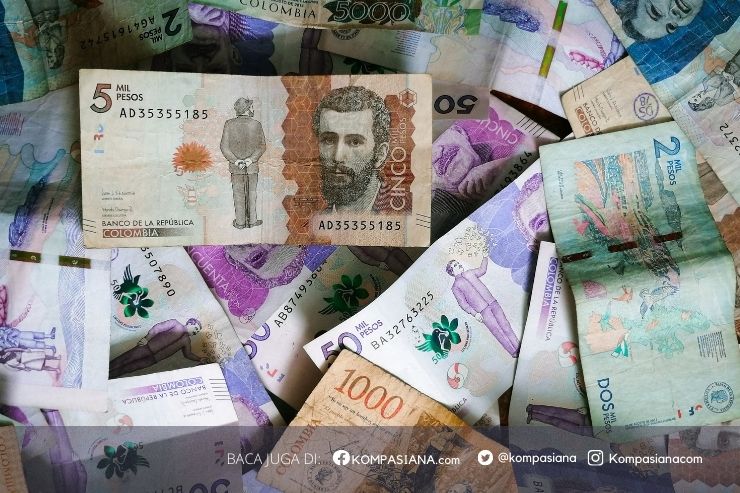Abstract
The health and performance of the small and medium enterprise (SME) sector is crucial to regional and national economies of most developed countries (Jones, Macpherson and Thorpe, 2010; Thorpe, Cope, Ram and Pedler, 2009). The Global Entrepreneurship Monitor shows that in low income countries necessity entrepreneurship is larger compared to larger income countries (Manuel and Romero, 2006). In addition, small firms represent the largest majority of the population of firms in developing countries (Moro and Kodwani, 2010). In recognition of this, banks in Indonesia have been supported through government policy to provide Corporate Social Responsibility (CSR) and program (KUR) for SMEs, aimed at developing source of funds that will support small business growth (Ian, Eleanor, Sarah, 2010).
In this research I had explore the relationship between loan and collateral policy with national development by examining a program delivered by bank for growth-oriented small business owners. I concern with addressing the overarching questions: what is the impact of KUR and SME engagement on entrepreneurship? And how does KUR engagement impact on a national economy? Why some small business owners failed to get a loan from the bank? Is there any possibility to make a new loan and collateral policy for SMEs? To deal with these questions a qualitative approach to the research had examine the situations of SME owner/managers (Ian, Eleanor, and Sarah, 2010), in a balance sector, structure and business.
To create this research, the data was collected during the period 2006-2009. Evidence shows that collateral in loan requirement delivered a lack to SMEs and national development in developed countries, because loan is one of the most important things to support the growth and the development of the business.
Keywords: Loan, interest rate, collateral, KUR, social entrepreneur
1.Introduction
In this research I explore the relationship between KUR policy and National development. More specifically, I examine a program delivered by bank for growth-oriented small business owners, which has a lack in collateral and its impact on the national economy. This interaction between bank and small business was funded by government, driven by Indonesian policies.
The impact of failure on the individual entrepreneur has been of minimal interest to most theorists (Gladstone and Lee, p. 27, 1995). Else, further research should be dedicated to the subject of failure (Cope, Cave and Eccles, 2004). Therefore, by trying to answer what is the impact of KUR engagement on entrepreneurship? And how does KUR engagement impact on a national economy? Why some small business owners still failed to get a loan from the bank? And is there any possibility to make a new loan and collateral policy for SMEs?I will contribute to the effort aimed at understanding the process which determines the survival of small firms, types of failureand I also attempt to reduce the gap in the study of the forces which influence the failure and survival of entrepreneur.
Why is the entire question relevant? It is relevant because loan is the most important thing in SMEs growth, and it also provides two conflicting hypotheses as answers (Manuel, 2006).On one hand, we can argue that the small firm owners will make non performing loan if they received loan, so the bank need collateral to prevent it. On the other hands, we can argue that small firm owners will not make non performing loan if they received loan, but they don’t have any collateral to prove it.
2.The impact and the lack of KUR (Kredit Usaha Rakyat)
The health and performance of the small and medium enterprise (SME) sector is crucial to regional and national economies of most developed countries (Jones, Macpherson and Thorpe, 2010; Thorpe, Cope, Ram and Pedler, 2009). In addition, small firms represent the largest majority of the population of firms in developing countries (Moro and Kodwani, 2010). Often seen as “tiny acorns” from which large oak trees can grow (Thorpe et al., 2009: 201), the view the view of government throughout the developed world is that this sector should be supported and encourage (Ian, Eleanor, Sarah, 2010).In order to achieve this, a number of government schemes and policies have been introduced in Indonesia to develop interaction between bank and SMEs. Alike the United Kingdom (UK) released HEIs to train SMEs, the government in Indonesia released KUR (kredit usaha rakyat) policy to develop source of fund for SMEs from the bank.
Unfortunately, there is a lack between social entrepreneurs, advisers, policy makers and others – including researchers (Carole-Howorth, 2007). For example, I never got a loan from 5 National Bank if used “the normal process or business as usual”, even though I could pay the cost of fund and had the entire bank requirement such as, 2 years legal business license, financial statement with positive cash flow, and 30% of collateral in deposit as stated on the government policy. I know the bank had positive motive that collateral could reduce the non performing loan possibilities. Others, if I pay at least 70$ same as the government regulation, I have to spend more than 3 months to get a small business enterprise license, but if I pay 250$ or more the license lead time is one month or less, although not all of the government employees did it but it also make entrepreneur could not get the loan from the bank, because the bank would always request it. Both of examples had made my business and other entrepreneur grow slowly.
2.1The driver of KUR (Kredit Usaha Rakyat)
KUR was released to minimize the negative effect from the unemployed people explosion, with supporting health and performance of the small and medium enterprise (SME).The banking system is essential for the life of firms and especially for small and medium enterprises as they do not have access to capital markets (Moro and Kodwani, 2010).
2.1.1Low opportunity in labor market
When the labour market is depressed, such as a period of high unemployment, we would expect the rates of entrepreneurship to be higher, as individuals would be pushed into this level activity due to the lack of proper income from paid-employment (Manuel and Romero, 2006).
The Global Entrepreneurship Monitor shows that in low income countries necessity entrepreneurship is larger compared to larger income countries (Manuel and Romero, 2006). According to Acs et. Al. 2004 “this is because people in richer countries tend to have access to more diversified labour market…”therefore suggesting that individuals in poor countries face few or low quality labour market option which forces them to try self-employed out of necessity. In Indonesia, more than millions unemployed people are undergraduate students, while the rest of it is senior high school or lower.
Picture 1. 120.000 candidates with GPA 2.72 for 500 opportunities in Indonesian National Television, 2006 (Dhani, 2006)
2.1.2Highly interest rate
The crisis in 2008, force the bank to raise its loan interest rate to reduce the loan volume and transaction, working capital and investment loan proportion. In Indonesia, the working capital and investment loan proportion are taking only 20% of total loan, while the consumer loan takes the rest of it (80%) with interest rate start from 16 % up to 300% in a year andrequire collateral.
Table 1. Consumer Loan Type and Interest Rate (Edited from many sources, Dhani, 2010)
Institution
Type of Loan
Interest Rate
Access
Easy
Medium
Hard
RENTENIR / KOPERASI
KTA







